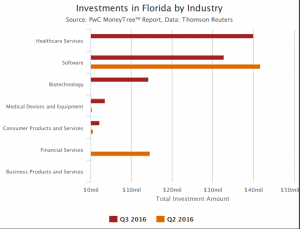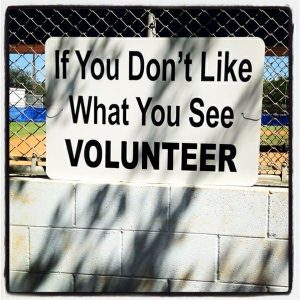
“And suddenly I realised that I was no longer driving the car consciously. I was driving it by a kind of instinct, only I was in a different dimension.”
-Aryton Senna
This may seem like an odd post for someone who usually writes about innovation and entrepreneurship, but.. too bad.
When I was 10 or 12 years old I played baseball, either catcher, pitcher, once in a while I played 2nd base. Second was my favorite position because I got some pretty good plays. What was weird was, and I didn’t really consider it at odd at the time, I knew where to stand. Not in the “you play 2nd, so you stand about 5-10 feet off 2nd base” but in a very different way. There was this odd thing that I’d experience – as the batter got settled into the box I’d shift around a little bit: left; right; front; back; back a little more. The best way I can describe it is feeling like you’re standing in a small depression in the field. A little to far left and it wouldn’t “feel” right, I’d feel like I was out of the “groove” and I’d move back. I’d then test it a little bit, move to the right. Same thing, out of the groove. I somehow “knew” where to stand. And once, just once, I heard the crack of the bat… and the ball was in my glove. I never saw the line drive that got fired straight at me. I don’t recall ever having moved my arm to make the catch, and I didn’t know how the ball got there. As a kid I didn’t know to question it, I got the out and that’s all that mattered. I didn’t want to sound like a weirdo to my team so I didn’t talk to them about it.
In they 90’s I found a copy of Mihaly Csikszentmihalyi’s book “Flow” which goes through the psychology of optimum performance. I’ve since lost the book book but did pick up a copy from Amazon lately while I researched this post. What he describes is the state of “flow”. The disconnect between the body and the consciousness. How athletes and others see events before they occur. A transcendence between what is going on around you, and what is about to happen. Schumacher described it as “the perfect lap” where you literally don’t know how you just did what you did. It’s not a result of just training, it’s not a result of great reflexes, it’s not luck. It’s well beyond that. Senna had the seeming ability to bend the car around the armco at Monaco. You’re at 120 mph and 2 inches from the barrier. How do you bend the car around anything?
Flow is where everything becomes effortless, you’re a super-human, you have no limits, you can go all day, and you become one with what’s going on around you. It just happens. You can’t force it. It’s a Zen-like state that when you experience it, leaves you in tears and in awe. If you’re lucky, even pro athletes may experience it 2-3 times in their life. I’ve experienced it twice, once in baseball, once in cycling.
There’s a level of performance above that which most of us experience, what most of us know about. If you’re lucky, you’ll experience it once in your life. It is a humbling “that wasn’t me doing that” experience.
If you’re an athlete at any level, I hope you experience flow at least once. If will change you. If you’re a young athlete, you’re more prone to these types of moments. There’s still some research going on to try and identify exactly what’s going on in the brain. But I think we’re a long way from being able to explain it.
 Tom Wujec. Singularity University, Sketchbook, Autodesk. If you have not yet seen his TED talk on visualizing complexity, you may want to see that first and come back. At the end of the video he describes how he help a company recover approximately $50 million in revenue. Most of it recovered when the company’s executives realized how overly complex their business processes were. Lots of waste. Lots of lost revenue.
Tom Wujec. Singularity University, Sketchbook, Autodesk. If you have not yet seen his TED talk on visualizing complexity, you may want to see that first and come back. At the end of the video he describes how he help a company recover approximately $50 million in revenue. Most of it recovered when the company’s executives realized how overly complex their business processes were. Lots of waste. Lots of lost revenue.




 Is that people that have a “good idea” (aka, recognize a true pain point) don’t know how to get a prototype in people’s hands in order to test it. Most think you need a developer, a “technical co-founder”. That’s shit. If you can’t write a single line of code then you have two options:
Is that people that have a “good idea” (aka, recognize a true pain point) don’t know how to get a prototype in people’s hands in order to test it. Most think you need a developer, a “technical co-founder”. That’s shit. If you can’t write a single line of code then you have two options: If things, like a product for example, aren’t going the way you want, you’re either 100% at fault or you should take a bigger, stronger role. If you feel you don’t yet have the skill set to pull it off, you’ll develop them as you go. Who gives a shit if you’re stepping on someone’s toes. What matters is whether or not the [new] customer is going to say “Holy shit, I LOVE THAT!” Don’t be one of the people standing around looking at a problem saying “somebody needs to do something”. That somebody is YOU. Jump in. Help. Don’t be
If things, like a product for example, aren’t going the way you want, you’re either 100% at fault or you should take a bigger, stronger role. If you feel you don’t yet have the skill set to pull it off, you’ll develop them as you go. Who gives a shit if you’re stepping on someone’s toes. What matters is whether or not the [new] customer is going to say “Holy shit, I LOVE THAT!” Don’t be one of the people standing around looking at a problem saying “somebody needs to do something”. That somebody is YOU. Jump in. Help. Don’t be  Crank out as much as you can as fast as you can. You may think quality matters, but recent studies show that it doesn’t. Quality ideas are a function of a quantity of ideas.
Crank out as much as you can as fast as you can. You may think quality matters, but recent studies show that it doesn’t. Quality ideas are a function of a quantity of ideas. The only Tom Peters book I own is Re-imagine
The only Tom Peters book I own is Re-imagine

